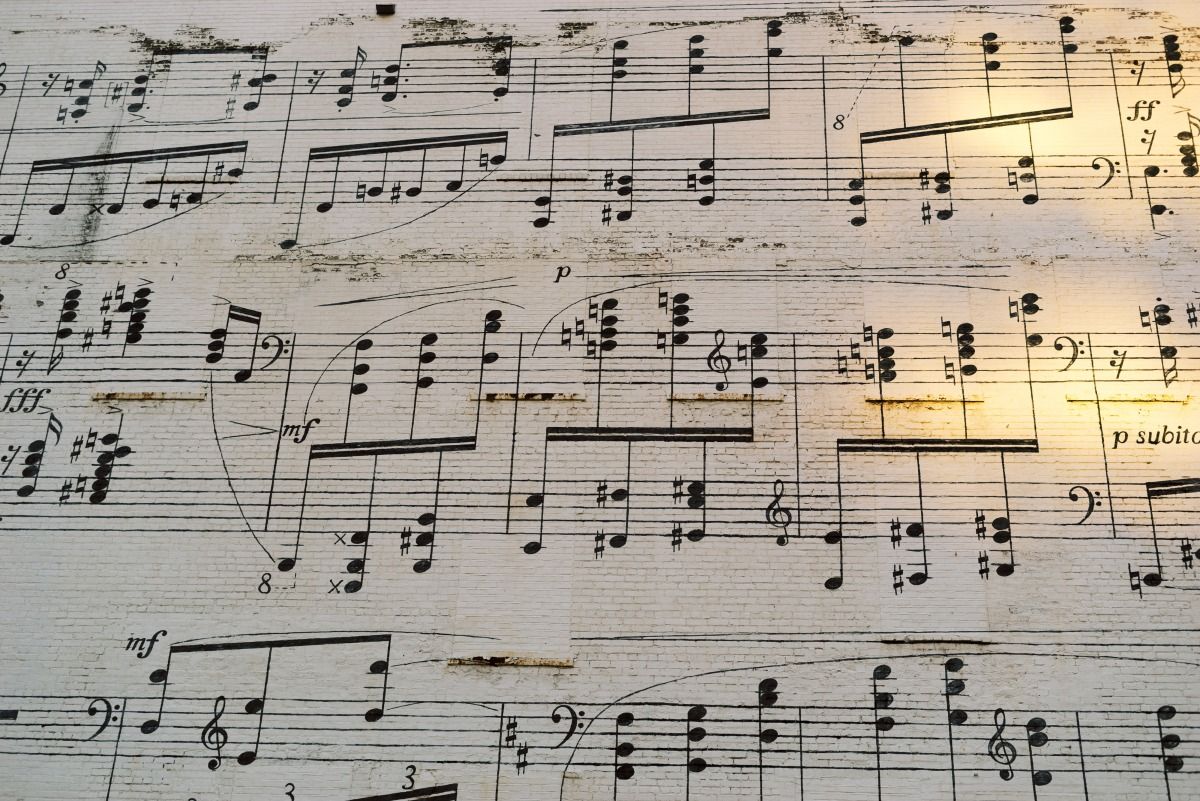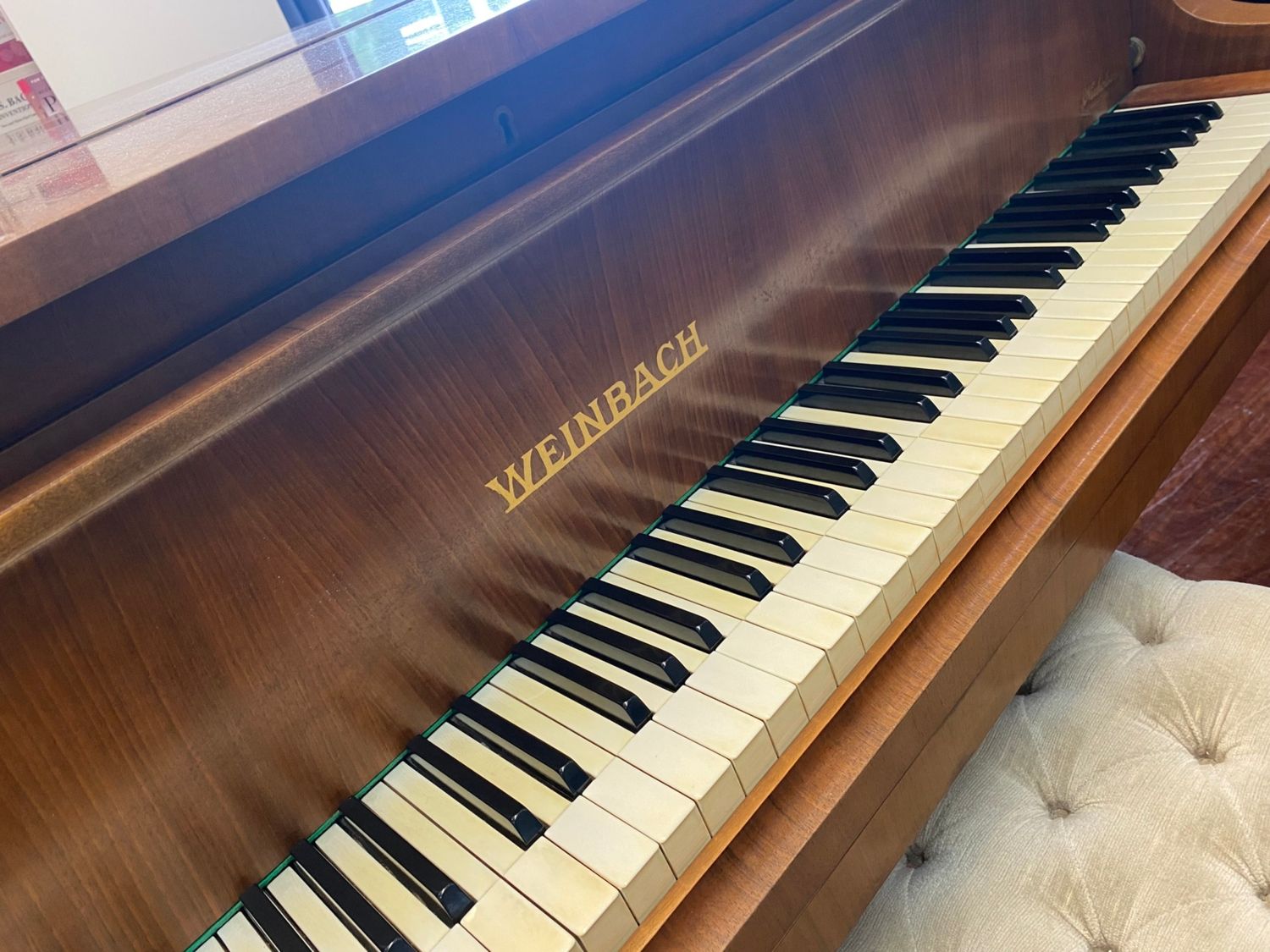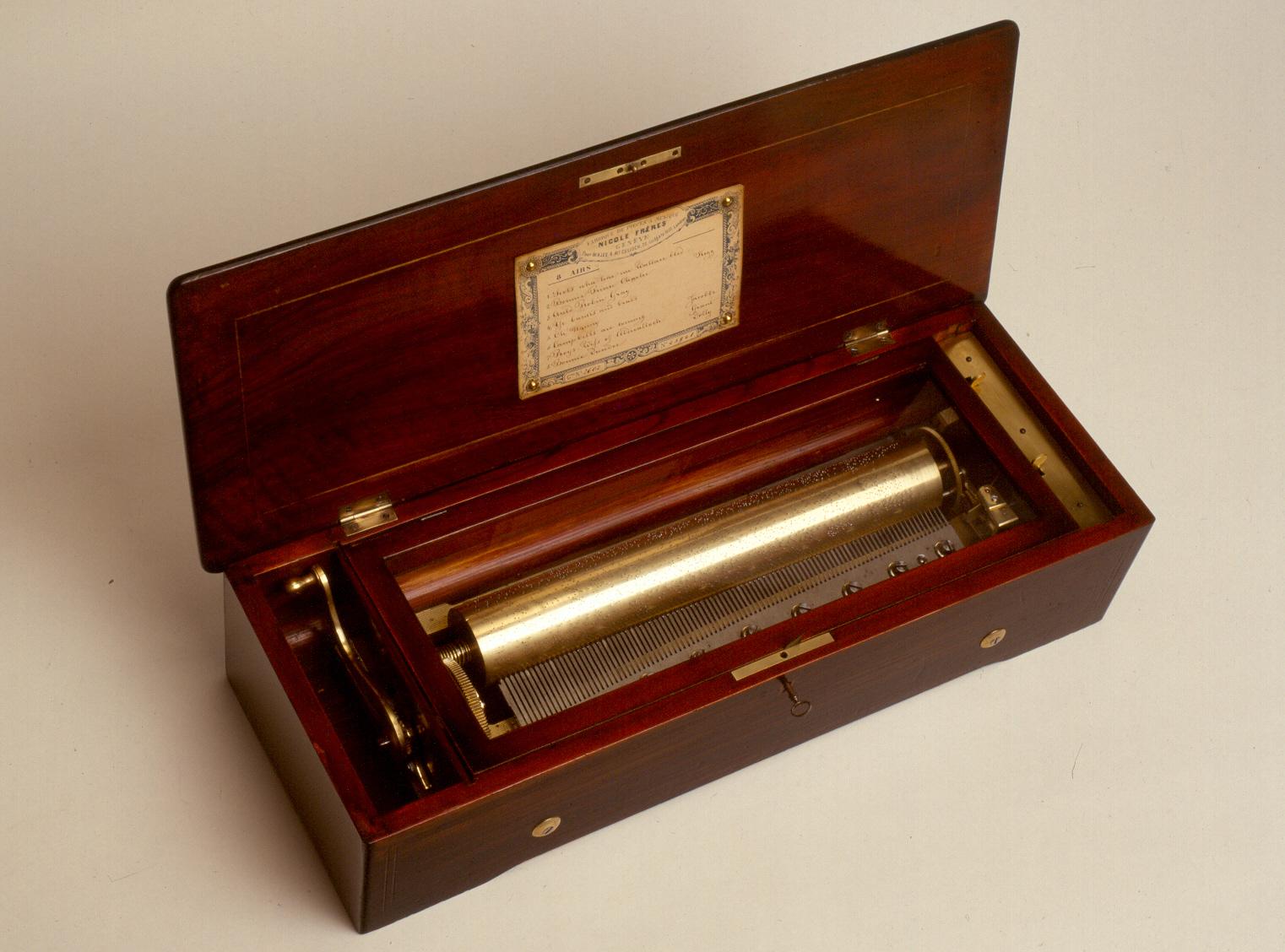Home>Production & Technology>Sheet Music>How To Tell If Sheet Music Is Major Or Minor


Sheet Music
How To Tell If Sheet Music Is Major Or Minor
Modified: January 22, 2024
Unsure if the sheet music you have is in a major or minor key? Discover simple techniques to determine the key of any sheet music.
(Many of the links in this article redirect to a specific reviewed product. Your purchase of these products through affiliate links helps to generate commission for AudioLover.com, at no extra cost. Learn more)
Table of Contents
Introduction
Welcome to the fascinating world of sheet music! As a musician or music enthusiast, you may have come across the terms “major” and “minor” when discussing musical pieces and compositions. These two concepts are fundamental to understanding the tonal characteristics and emotional qualities of a piece of music.
In this article, we will delve into the intricacies of major and minor keys in sheet music. We will explore how to recognize these tonalities, decipher key signatures, and identify major and minor chords and progressions. By the end of this article, you will have a deeper understanding of how major and minor tonalities influence the overall mood and structure of a musical piece.
Whether you are a beginner musician looking to understand the basics or an experienced player seeking to expand your knowledge, this article is here to guide you through the process of discerning major and minor elements in sheet music. So, let’s dive in!
Understanding Major and Minor Keys
In music theory, the major and minor keys form the foundation of tonal music. They represent different tonalities that evoke distinct emotional qualities. Understanding the difference between major and minor keys is essential for musicians to interpret and perform sheet music accurately.
Major keys are often associated with feelings of happiness, brightness, and triumph. They have a more uplifting and positive quality. Major keys are characterized by a tonal center known as the “tonic,” and they typically follow a specific pattern of whole and half steps, known as the major scale. For example, the C major scale consists of the notes C, D, E, F, G, A, and B.
On the other hand, minor keys convey emotions of sadness, melancholy, or introspection. They have a more somber and moody quality compared to major keys. Similar to major keys, minor keys have a tonal center called the “tonic,” and they follow a specific pattern of whole and half steps, known as the minor scale. For instance, the A minor scale includes the notes A, B, C, D, E, F, and G.
One key difference between major and minor keys lies in the third note of the scale. In a major key, the third is a major third interval, which gives the major scale its characteristic sound. In a minor key, however, the third is a minor third, lending the minor scale its distinctive quality.
It’s important to note that while major and minor keys have different emotional connotations, they can coexist within the same musical composition. Many pieces of music employ both major and minor elements to evoke contrasting emotions and create a diverse sonic palette.
Now that we have a basic understanding of major and minor keys, let’s move on to exploring how to identify these tonalities in sheet music.
Key Signatures
Key signatures play a crucial role in determining the tonality of a musical piece. They provide valuable information about the key in which the piece is written and help musicians navigate through the sheet music more efficiently.
A key signature is represented by a series of sharps (#) or flats (b) that appear at the beginning of a staff. These symbols indicate the specific notes that are to be raised or lowered throughout the piece. The number of sharps or flats in the key signature gives a clear indication of the key.
To determine the major key from the key signature, you can look at the last sharp in the key signature and go up a half step. For example, if the last sharp in the key signature is F#, the major key is G major. Similarly, to find the minor key, you can go down a minor third from the major key. For instance, if the major key is G, the minor key is E minor.
If a key signature has flats, you can determine the major key by looking at the second-to-last flat. For example, if the second-to-last flat is E♭, the major key is E♭ major. To determine the minor key, you can count up a major sixth from the major key. So, with E♭ major, the relative minor key is C minor.
Key signatures not only provide information about the tonality but also help musicians anticipate which notes will be sharp or flat throughout the piece. This knowledge enables players to read the sheet music more efficiently and make informed decisions regarding fingerings, hand positions, and musical interpretations.
When you encounter a specific key signature while reading sheet music, take a moment to identify the key and familiarize yourself with the corresponding major or minor scale. This will help you understand the tonal characteristics and guide your performance.
Now that we have covered key signatures, let’s move on to exploring how to identify major and minor tonalities in sheet music through various visual cues and musical elements.
Identifying Major and Minor Sheet Music
Identifying whether a piece of sheet music is in a major or minor key can be done through a combination of visual cues and analysis of the musical elements present in the composition. These cues can help you decipher the tonal characteristics and guide your interpretation of the piece.
One visual cue to look for is the key signature at the beginning of the staff. As mentioned earlier, sharps (#) or flats (b) in the key signature indicate the specific notes that are consistently raised or lowered throughout the piece. By determining the key signature, you can identify whether the piece is in a major or minor key.
When examining the musical elements, pay attention to the overall mood and harmonic structure of the piece. Major keys tend to evoke feelings of joy, brightness, and positivity. They often have a more uplifting and energetic quality. Conversely, minor keys tend to convey a sense of sadness, melancholy, or introspection. They often have a more somber and emotional quality.
Another element to consider is the use of major and minor chords and progressions. Major chords generally have a more consonant and stable sound, while minor chords can add a touch of melancholy or tension. Listen for the dominant chords, as they often provide valuable clues about whether a piece is in a major or minor key.
Tempo and mood can also be indicative of the tonality. Major key pieces often have a faster tempo and a more upbeat and cheerful mood. Minor key pieces, on the other hand, tend to be slower in tempo and evoke a deeper sense of emotion and introspection.
Listening for the tonal center, or tonic, can be helpful in identifying the major or minor key. The tonic note in a major key often provides a sense of resolution and stability, while the tonic in a minor key may evoke a sense of tension or yearning.
It’s important to remember that identifying major and minor tonalities in sheet music is not always a straightforward process. Some pieces may incorporate elements from both major and minor scales, blending these tonalities to create a unique sound. In such cases, it’s essential to analyze the overall context and musical structure to determine the dominant tonality.
By considering these visual cues and analyzing the musical elements in the piece, you will develop a discerning ear for identifying major and minor tonalities in sheet music. This knowledge will enhance your understanding of the composition and aid in your interpretation and performance of the piece.
Now that we have explored various visual and auditory cues for identifying major and minor tonalities, let’s conclude our journey through the world of sheet music.
Visual Cues
When it comes to deciphering the tonality of sheet music, visual cues can be a great asset. By examining the musical symbols, notations, and overall structure of the composition, you can gain insight into whether a piece is in a major or minor key.
One of the first visual cues to consider is the key signature. As mentioned earlier, the presence of sharps (#) or flats (b) at the beginning of the staff can provide valuable information about the key of the piece. Major keys are often associated with key signatures that contain either sharps or no sharps or flats at all, while minor keys tend to have flats in their key signatures. This can be a helpful initial indicator of the tonality.
Another visual cue to look for is the use of accidentals throughout the sheet music. Accidentals are symbols that temporarily raise or lower the pitch of a note. In major key sheet music, accidentals are more likely to be used as temporary alterations to the natural notes within the key. In contrast, minor key sheet music may feature accidentals that are more integral to the tonality, altering the key signature notes themselves.
The presence of specific intervals can also provide visual cues about the tonality. Major keys often feature major thirds, which can be visually recognized by the distance between a note and the note two steps above it in the staff. In minor keys, however, you will find more frequent use of minor thirds, characterized by the distance between a note and the note one step above it in the staff.
Examining the overall structure and chord progressions of the sheet music can also offer visual insights. Major key pieces tend to have a more stable and predictable chord progression, while minor key pieces may exhibit more unexpected progressions, making use of modal interchange and borrowed chords.
Additionally, paying attention to dynamic markings and articulations can provide valuable visual cues. Major key pieces often have brighter and more energetic markings, with frequent use of staccato and accented notes. In contrast, minor key pieces tend to feature softer and more introspective markings, with notes sustaining longer or marked with legato phrasing.
By observing these visual cues collectively, you can gather significant information about the tonality of the sheet music. It’s important to note that not every visual cue will be definitive, as composers may intentionally incorporate elements from multiple tonalities or use unconventional notation. Therefore, it is essential to consider visual cues in conjunction with other musical and auditory elements to make an accurate determination of the major or minor key.
Now that we’ve explored the visual aspects of identifying major and minor tonalities, let’s move on to discussing other important musical elements to consider.
Harmonic and Melodic Elements
Understanding the harmonic and melodic elements in sheet music is crucial for identifying major and minor tonalities. By examining the chords, melodies, and progressions within a piece, you can gain insights into the tonal characteristics and determine whether it is in a major or minor key.
Harmonically, major keys are often characterized by a sense of stability and consonance. They typically feature chords built on the tonic, dominant, and subdominant notes of the scale, creating a harmonically pleasing and predictable progression. In major key sheet music, major chords tend to predominate, adding to the overall bright and uplifting quality of the piece.
In contrast, minor keys introduce a sense of tension and dissonance, which can be reflected in the harmonic elements. Minor key pieces commonly employ minor chords, which contribute to a more somber and introspective mood. Additionally, minor key sheet music may include diminished or augmented chords, adding complexity and emotional depth to the composition.
Melodically, major and minor keys have distinct characteristics. In major key sheet music, melodies often feature a clear and straightforward progression with a sense of resolution, reflecting the consonant nature of the major tonality. Major key melodies tend to evoke feelings of happiness, optimism, and triumph.
On the other hand, minor key melodies can have a more nuanced and emotive quality. They may incorporate descending intervals, such as the descending minor scale, to convey a sense of melancholy or sadness. Minor key melodies often create a more introspective and evocative atmosphere.
When analyzing the harmonic and melodic elements in sheet music, it’s important to consider the context and overall structure of the composition. Some pieces of music may include sections or passages that deviate from the primary key, incorporating elements from other tonalities. These shifts can add complexity and variety to the piece, requiring a careful analysis of the overarching tonality.
By paying attention to the harmonic progressions and melodic characteristics, you can gain valuable insights into the major or minor tonality of the sheet music. These elements, in combination with the visual cues and other musical factors, work together to provide a comprehensive understanding of the tonal structure within a composition.
Now that we’ve explored the harmonic and melodic elements, let’s move on to discussing the role of chords and triads in determining the major or minor tonality of sheet music.
Triads and Chords
Triads and chords play a significant role in determining the major or minor tonality of sheet music. By examining the types of chords present in a composition, you can unravel the tonal characteristics and identify whether it is in a major or minor key.
In major key sheet music, major triads take center stage. Major triads consist of the root note, a major third interval, and a perfect fifth interval. These chords create a sense of stability and consonance that is characteristic of major tonalities. Major chords are often used to establish the tonal center, or tonic, and provide a foundation for the melodic and harmonic elements of the piece.
Minor key sheet music, on the other hand, leans toward minor triads. Minor triads consist of the root note, a minor third interval, and a perfect fifth interval. These chords introduce a touch of melancholy and tension to the composition. Minor chords are utilized to evoke emotions of sadness, introspection, or longing, which are typical of minor tonalities.
Additionally, chords beyond triads can provide further insights into the tonality. In major key sheet music, dominant seventh chords are commonly used to add a bit of tension before resolving to the tonic. These chords, built on the dominant note of the scale, create a sense of anticipation and urgency, leading the listener back to the root chord.
In minor key sheet music, variations of minor chords such as the minor seventh chord or the minor sixth chord can emphasize the melancholic and emotive qualities. These chords enhance the tonal tension and contribute to the overall mood of the composition.
It’s worth noting that chord progressions can also provide valuable clues about the tonality. Major key pieces often have chord progressions that follow a common sequence, such as the I-IV-V progression. This progression utilizes the tonic, subdominant, and dominant chords, creating a sense of resolution and stability.
In contrast, minor key pieces may employ the natural minor scale, harmonic minor scale, or melodic minor scale, resulting in different chord progressions. These progressions can add a sense of complexity and tonal color to the music, reflecting the captivating nature of minor tonalities.
By analyzing the types of triads and chords used within a piece of sheet music, you can gain valuable insights into the major or minor tonality. Keep in mind that composers may also incorporate chromatic or altered chords to add unique flavors or modulate the tonality. Therefore, it’s essential to consider the overall context and harmonic structure of the composition.
Now that we’ve explored the role of chords in determining major or minor tonalities, let’s move on to discussing the significance of tempo and mood in identifying the tonality of sheet music.
Tempo and Mood
The tempo and mood of a piece of sheet music can provide valuable indications about whether it is in a major or minor key. By considering the speed and emotional qualities conveyed, you can further discern the tonality and interpret the music with greater nuance.
Major key sheet music often exhibits a faster tempo, reflecting the lively and upbeat nature of major tonalities. The energetic and joyful qualities of major keys are often complemented by brisk tempos, creating a sense of excitement and positivity. The quick pace of major key pieces can be felt through lively rhythms and spirited melodic lines.
In contrast, minor key sheet music generally has a slower tempo, highlighting the poignant and introspective qualities associated with minor tonalities. Slower tempos allow for deeper emotional expression and allow the listener to connect with the melancholic or reflective mood of the composition. Minor key pieces often feature lyrical melodies and more sustained notes, drawing out the emotional depth of the music.
While tempo alone is not an absolute indicator of tonality, it can provide valuable insights when combined with other musical elements. The relationship between tempo and tonality is not always fixed, as composers might intentionally create contrasts or juxtapositions to evoke specific emotional responses.
The mood of a piece is closely tied to the tonality and can further illuminate the major or minor key. Major key compositions generally evoke feelings of happiness, triumph, and optimism. These pieces often have a bright and uplifting mood, radiating positivity and joy. The use of major chords and consonant harmonies contributes to the overall cheerful atmosphere.
On the other hand, minor key compositions tend to evoke emotions of sadness, introspection, or a sense of longing. The melancholic and emotive qualities associated with minor tonalities create a more somber and profound mood. The use of minor chords, dissonances, and complex harmonies adds depth and intensity to the emotional depiction.
When analyzing a piece’s tempo and mood, it is important to consider them within the broader musical context. Occasionally, composers may subvert expectations by incorporating contrasting tempos or moods to create tension and intrigue.
By paying attention to the tempo and mood of a piece of sheet music, you can gather valuable insights into the major or minor tonality. These elements, in conjunction with other musical factors, help deepen your understanding and interpretation of the composition.
Now that we have explored the significance of tempo and mood in identifying the tonality of sheet music, let’s move on to discussing the role of listening for major and minor tonalities in the next section.
Listening for Major and Minor Tonalities
While visual cues and analysis of musical elements are valuable for identifying major and minor tonalities in sheet music, listening to the music itself is a powerful tool in discerning the tonal characteristics. By training your ear to recognize the unique qualities of major and minor tonalities, you can confidently identify the tonality of a piece solely through auditory perception.
One of the first things to listen for is the overall mood and emotional impact of the music. Major tonalities often elicit feelings of happiness, excitement, or positivity. The music feels bright, uplifting, and optimistic, evoking a sense of joy and triumph. In contrast, minor tonalities convey a sense of sadness, introspection, or melancholy. The music feels more subdued, introspective, and emotionally profound.
Listening for the tonal center, or tonic, is crucial in identifying major and minor tonalities. In major key pieces, the tonic note serves as a stable and resolving point, providing a sense of home. The music often revolves around this note, with phrases and melodies gravitating towards it. In minor key pieces, the tonic note may create a sense of tension or longing, adding complexity to the music. Pay attention to how the melody and chords interact with the tonal center.
Harmonic progressions can also provide clues. Major key pieces often feature progressions that feel resolved and stable, with predictable chord movements built on the tonic, subdominant, and dominant notes. The progression may follow a common pattern, such as the I-IV-V progression. In contrast, minor key pieces may incorporate more unexpected or dissonant chord progressions, reflecting the tonal characteristics unique to minor key tonalities.
Listen for the use of major and minor chords. Major chords typically have a more consonant and bright sound, providing a sense of resolution and stability. Minor chords may introduce a touch of dissonance or tension that evokes a deeper emotional response. Pay attention to how the chords contribute to the overall tonal quality and mood of the music.
Lastly, the melodic lines can give insight into the tonality. Major key melodies often have a buoyant and uplifting quality, characterized by upward motion and melodic lines that create a sense of optimism. Minor key melodies may have a more plaintive or introspective quality, with descending intervals or poignant expressions that evoke a somber or reflective mood.
Listening actively and attentively to the music will train your ear to recognize the distinct qualities of major and minor tonalities. Practice by listening to a variety of compositions in different keys and focusing on the tonal implications and emotional responses they elicit. Over time, you will become more adept at identifying major and minor tonalities solely through auditory perception.
Now that we have covered listening for major and minor tonalities, let’s conclude our exploration of sheet music and tonal characteristics.
Conclusion
Understanding major and minor tonalities is essential for any musician or music enthusiast. It allows us to delve deeper into the emotional and structural aspects of sheet music, enhancing our interpretation and performance. By considering visual cues, analyzing harmonic and melodic elements, observing triads and chords, and discerning tempo and mood, we can accurately identify whether a piece is in a major or minor key.
Visual cues such as key signatures and accidentals provide initial insights into the tonality of the sheet music. Harmonic elements, such as the use of major or minor chords and progressions, offer further indications. Melodic lines and the presence of specific intervals can assist in distinguishing major and minor tonalities as well.
Examining triads and chords within the composition provides valuable clues about the tonal center and emotional quality of the music. Major triads and major seventh chords signify major tonalities, while minor triads and minor seventh chords suggest minor tonalities. The overall structure, dynamic markings, and articulations also contribute to the tonal characterization.
Tempo and mood play significant roles in identifying major and minor tonalities. Major key sheet music often features faster tempos and brighter moods, while minor key pieces tend to have slower tempos and evoke more introspective or melancholic emotions.
Listening actively and attentively to the music allows us to discern the tonal characteristics directly through our auditory perception. Paying attention to the overall mood, tonal center, harmonic progressions, and melodic qualities helps to identify major and minor tonalities and deepen our understanding of the music.
By combining visual cues, analysis of musical elements, and active listening, we can confidently identify major and minor tonalities in sheet music. This knowledge enhances our appreciation and interpretation of the composition, enabling us to capture the essence of the music and communicate its emotional depth effectively.
So, whether you are analyzing a piece of sheet music, preparing for a performance, or simply engaging with music as a listener, understanding major and minor tonalities enhances your musical experience. Embrace the fascinating world of sheet music and let your knowledge of major and minor tonalities guide you on a captivating musical journey.











